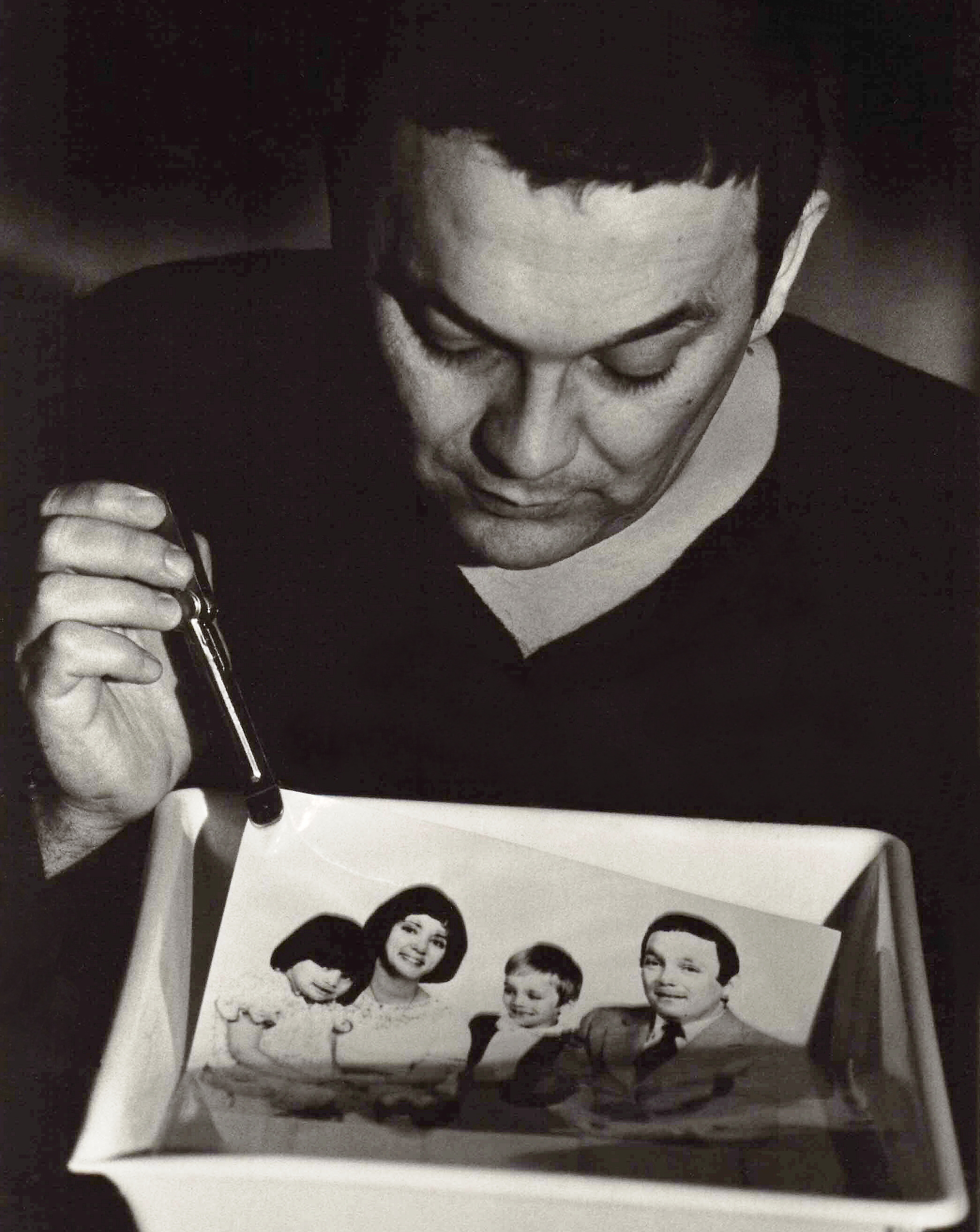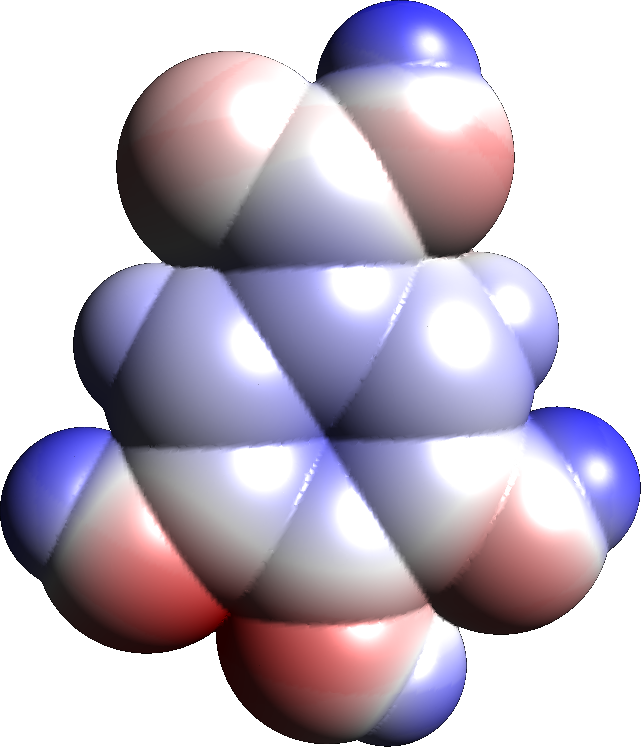|
Pyrogallol
Pyrogallol is an organic compound with the formula C6H3(OH)3. It is a water-soluble, white solid although samples are typically brownish because of its sensitivity toward oxygen. It is one of three isomers of benzenetriols. Production and reactions It is produced in the manner first reported by Scheele in 1786: heating gallic acid to induce decarboxylation. Gallic acid is also obtained from tannin. Many alternative routes have been devised. One preparation involves treating ''para''-chlorophenoldisulfonic acid with potassium hydroxide, a variant on the time-honored route to phenols from sulfonic acids. Polyhydroxybenzenes are relatively electron-rich. One manifestation is the easy C-acetylation of pyrogallol. Uses It was once used in hair dyeing, dyeing of suturing materials. It also has antiseptic properties. In alkaline solution, pyrogallol undergoes deprotonation. Such solutions absorb oxygen from the air, turning brown. This conversion can be used to determine ... [...More Info...] [...Related Items...] OR: [Wikipedia] [Google] [Baidu] |
Benzenetriol
The trihydroxybenzenes (or benzenetriols) are organic compounds with the formula C6H3(OH)3. Also classified as polyphenols, they feature three hydroxyl groups substituted onto a benzene ring. They are white solids with modest solubility in water. : The enzyme pyrogallol hydroxytransferase uses benzene-1,2,3,5-tetrol and benzene-1,2,3-triol (pyrogallol), whereas its two products are benzene-1,3,5-triol (phloroglucinol) and benzene-1,2,3,5-tetrol. This enzyme can be found in '' Pelobacter acidigallici.'' See also * Dihydroxybenzenes In organic chemistry, dihydroxybenzenes (benzenediols) are organic compounds in which two hydroxyl groups () are substituted onto a benzene ring (). These aromatic compounds are classed as phenols. There are three structural isomers: 1,2-dihyd ... * Tetrahydroxybenzenes * Pentahydroxybenzene * Hexahydroxybenzene References {{aromatic-stub ... [...More Info...] [...Related Items...] OR: [Wikipedia] [Google] [Baidu] |
Photographic Developer
In the Photographic processing, processing of photographic films, plates or papers, the photographic developer (or just developer) is one or more chemicals that convert the latent image to a visible image. Developing agents achieve this conversion by Redox, reducing the silver halides, which are pale-colored, into silver metal, which is black when in the form of fine particles.Karlheinz Keller et al. ''Photography'' in ''Ullmann's Encyclopedia of Industrial Chemistry'', 2005, Wiley-VCH, Weinheim. . The conversion occurs within the gelatine matrix. The special feature of photography is that the developer acts more quickly on those particles of silver halide that have been exposed to light. When left in developer, all the silver halides will eventually be reduced and turn black. Generally, the longer a developer is allowed to work, the darker the image. Chemical composition of developers The developer typically consists of a mixture of chemical compounds prepared as an aqueous solut ... [...More Info...] [...Related Items...] OR: [Wikipedia] [Google] [Baidu] |
Orsat Apparatus
An Orsat gas analyser or Orsat apparatus is a piece of laboratory equipment used to analyse a gas sample (typically fossil fuel flue gas) for its oxygen, carbon monoxide and carbon dioxide content. Although largely replaced by instrumental techniques, the Orsat remains a reliable method of measurement and is relatively simple to use. The apparatus was invented by Louis Orsat who reported it in the Annales des Mines in 1875. There was an earlier report by Thomas Egleston in 1873. Construction The apparatus consists of an intake valve which feeds into a calibrated water or glycerin jacketed gas burette, this burette is then connected by tubing to two or more absorption pipettes containing chemical solutions that absorb the gases it is being used to measure. The intake and each of the absorption pipettes are valved with stopcocks to allow the movement of gas through the apparatus to be precisely controlled. For safety and portability, the apparatus is usually encased in a woode ... [...More Info...] [...Related Items...] OR: [Wikipedia] [Google] [Baidu] |
Gallic Acid
Gallic acid (also known as 3,4,5-trihydroxybenzoic acid) is a trihydroxybenzoic acid with the formula C6 H2( OH)3CO2H. It is classified as a phenolic acid. It is found in gallnuts, sumac, witch hazel, tea leaves, oak bark, and other plants. It is a white solid, although samples are typically brown owing to partial oxidation. Salts and esters of gallic acid are termed "gallates". Its name is derived from oak galls, which were historically used to prepare tannic acid. Despite the name, gallic acid does not contain gallium. Isolation and derivatives Gallic acid is easily freed from gallotannins by acidic or alkaline hydrolysis. When heated with concentrated sulfuric acid, gallic acid converts to rufigallol. Hydrolyzable tannins break down on hydrolysis to give gallic acid and glucose or ellagic acid and glucose, known as gallotannins and ellagitannins, respectively. Biosynthesis Gallic acid is formed from 3-dehydroshikimate by the action of the enzyme shikimat ... [...More Info...] [...Related Items...] OR: [Wikipedia] [Google] [Baidu] |
John Wimberley
John Wimberley (born July 1945) is an American fine art photographer with a focus on landscapes and human figures, as well as mining camps and Native American rock art from the American West. His work is included in the permanent collections of the Portland Art Museum, the Museum of Fine Arts Houston, the Yale University Art Gallery, among others. Life and work Early years Wimberley was born in Bermuda in 1945 and moved to Alameda, California in 1948, where he lived until he enlisted in the United States Navy in 1963. In the Navy, John was trained and served as an Aviation Electronics Technician. He first began to explore photography using color film on the flight deck of the aircraft carrier during his tours in the Vietnam War. After his discharge from the Navy, Wimberley returned to the San Francisco Bay Area and worked as an electronics technician for Smith-Kline Instruments in Palo Alto, pursuing his photography during lunch hours on nearby. Work Wimberley shoots on larg ... [...More Info...] [...Related Items...] OR: [Wikipedia] [Google] [Baidu] |
Metol
Metol is a trade name for the organic compound with the formula OC6H4NH2(CH3)sub>2HSO4. It is the sulfate salt of ''N''-methylaminophenol. This colourless salt is a popular photographic developer used in monochrome photography.Gerd Löbbert "Photography" in Ullmann's Encyclopedia of Industrial Chemistry, 2005, Wiley-VCH, Weinheim. Synthesis and degradation Several methods exist for the preparation of ''N''-methylaminophenol. It arises by decarboxylation of ''N''-4-hydroxyphenylglycine ( Glycin). It can be obtained by reaction of hydroquinone with methylamine. Being an electron-rich arene, metol is readily degraded by hydrogen peroxide. Application Metol is an excellent developing agent for most continuous tone developer applications, and it has been widely used in published developer formulas as well as commercial products. However, it is difficult to produce highly concentrated developer solutions using Metol, and therefore, most Metol developers are supplied in dry chemica ... [...More Info...] [...Related Items...] OR: [Wikipedia] [Google] [Baidu] |
Sodium Metaborate
Sodium metaborate is a chemical compound of sodium, boron, and oxygen with formula . However, the metaborate ion is trimeric in the anhydrous solid, therefore a more correct formula is or . The formula can be written also as to highlight the relation to the main oxides of sodium and boron. The name is also applied to several hydrates whose formulas can be written for various values of ''n''. The anhydrous and hydrates are colorless crystalline solids. The anhydrous form is hygroscopic. Hydrates and solubility The following hydrates crystallize from solutions of the proper composition in various temperature ranges: * tetrahydrate from −6 to 53.6 °C * dihydrate from 53.6 °C to 105 °C * hemihydrate from 105 °C to the boiling point. Early reports of a monohydrate have not been confirmed. Structure Anhydrous Solid anhydrous sodium metaborate has the hexagonal crystal system with space group R\bar3 c. It actually contains a six-membered rings with the ... [...More Info...] [...Related Items...] OR: [Wikipedia] [Google] [Baidu] |
Eastman Kodak
The Eastman Kodak Company, referred to simply as Kodak (), is an American public company that produces various products related to its historic basis in film photography. The company is headquartered in Rochester, New York, and is incorporated in New Jersey. It is best known for photographic film products, which it brought to a mass market for the first time. Kodak began as a partnership between George Eastman and Henry A. Strong to develop a film roll camera. After the release of the Kodak camera, Eastman Kodak was incorporated on May 23, 1892. Under Eastman's direction, the company became one of the world's largest film and camera manufacturers, and also developed a model of welfare capitalism and a close relationship with the city of Rochester. During most of the 20th century, Kodak held a dominant position in photographic film, and produced a number of technological innovations through heavy investment in research and development at Kodak Research Laboratories. Kodak produc ... [...More Info...] [...Related Items...] OR: [Wikipedia] [Google] [Baidu] |
Jay DeFehr
Jays are a paraphyletic grouping of passerine birds within the family (biology), family Corvidae. Although the term "jay" folk taxonomy, carries no taxonomic weight, most or all of the birds referred to as jays share a few similarities: they are small to medium-sized, usually have colorful feathers and are quite noisy. These superificial characteristics set them apart from most other corvids such as crows, ravens, jackdaws, Rook (bird), rooks and magpies, which are larger and have darker plumage. Many so-called "jays" are genetically closer to these other corvids than other jays, however. Systematics and species Jays are not a monophyletic group. Anatomical and molecular evidence indicates they can be divided into a New World and an Old World lineage (the latter including the ground jays and the piapiac), while the grey jays of the genus ''Perisoreus'' form a group of their own.http://www.nrm.se/download/18.4e32c81078a8d9249800021299/Corvidae%5B1%5D.pdf PDF fulltext The black ... [...More Info...] [...Related Items...] OR: [Wikipedia] [Google] [Baidu] |
Photographic Paper
Photographic paper is a coated paper, paper coated with a light-sensitive chemical, used for making photographic prints. When photographic paper is exposed to light, it captures a latent image that is then Photographic developer, developed to form a visible image; with most papers the image density from exposure can be sufficient to not require further development, aside from fixing and clearing, though latent exposure is also usually present. The light-sensitive layer of the paper is called the emulsion, and functions similarly to photographic film. The most common chemistry used is Gelatin silver print, gelatin silver, but other alternatives have also been used. The print image is traditionally produced by interposing a Negative (photography), photographic negative between the light source and the paper, either by direct contact with a large negative (forming a contact print) or by projecting the shadow of the negative onto the paper (producing an enlargement). The initial light ... [...More Info...] [...Related Items...] OR: [Wikipedia] [Google] [Baidu] |
Edward Weston
Edward Henry Weston (March 24, 1886 – January 1, 1958) was an American photographer. He has been called "one of the most innovative and influential American photographers" and "one of the masters of 20th century photography." Over the course of his 40-year career Weston photographed an increasingly expansive set of subjects, including landscapes, still lifes, nudes, portraits, genre scenes, and even whimsical parodies. It is said that he developed a "quintessentially American, and especially Californian, approach to modern photography" because of his focus on the people and places of the American West. In 1937 Weston was the first photographer to receive a Guggenheim Fellowship, and over the next two years he produced nearly 1,400 negatives using his 8 × 10 view camera. Some of his most famous photographs were taken of the trees and rocks at Point Lobos, California, near where he lived for many years. Weston was born in Chicago and moved to California when he was 21. He kne ... [...More Info...] [...Related Items...] OR: [Wikipedia] [Google] [Baidu] |




